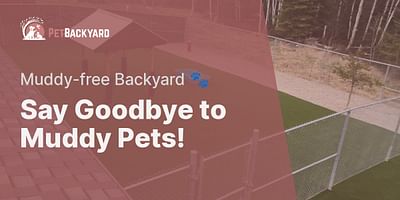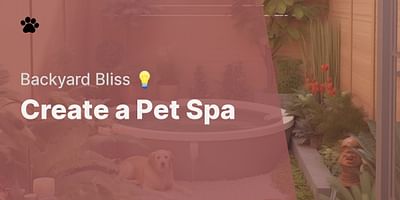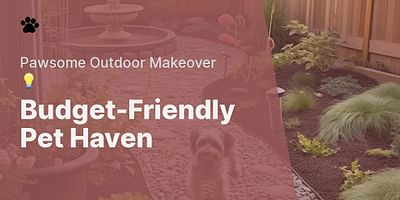Arnaldo Jacobson is a professional landscape designer, specializing in pet-centric outdoor environments. He has a rich portfolio of successful projects, all designed to provide safe and enjoyable outdoor spaces for pets.
Fixing a muddy backyard for your pets can be achieved through a combination of drainage solutions, choosing the right ground cover, and employing pet-friendly landscaping strategies. Here's a comprehensive guide on how to do just that.
Let's Tackle That Muddy Mess: Improving Your Backyard Drainage 🌧️
First, let's address the root cause of the problem - poor drainage. Excess water in your backyard can lead to muddy conditions, which aren't ideal for your pets. You might need to install a French drain system or create a rain garden to solve this issue. If the issue persists, consider consulting a professional landscaper.
Choosing Your Champion: The Right Ground Cover for Your Pet-Friendly Yard 🌱
Next, consider the type of ground cover in your backyard. Traditional grass may not be the best choice if you have active pets who love to dig or play rough. There are plenty of grass alternatives for pet yards that can withstand heavy foot traffic and are resistant to turning into mud. Check out our article on grass alternatives on a budget for some great ideas.
Meet Your New Best Friends: Pet-Safe Groundcovers 🐾
Ground covers such as clover, creeping thyme, and buffalo grass are tough, low-maintenance, and can tolerate pet traffic. Also, they are less likely to turn into mud compared to traditional grass.
Comparison of Pet-Safe Groundcovers and Their Characteristics
Creating a Pawsome Paradise: Pet-Friendly Landscaping Strategies 🏡
Beyond just the ground cover, there are numerous landscaping strategies you can employ to create pet-friendly outdoor areas. This includes creating designated play zones for your pets, using mulch in certain areas, and installing hardscapes such as paths and patios. For more in-depth information, feel free to read our guide on pet-friendly backyard ideas.
Fun and Function: Designing Play Zones for Your Pets 🎾
Create specific areas in your backyard for your pets to play and do their business. This can help limit the areas that get muddy and make clean-up easier. Consider using durable and pet-safe materials for these areas, such as pea gravel or artificial turf.
Mulch Ado About Nothing: Using Mulch to Prevent Mud 🍂
Mulch can be a great solution to prevent mud, as it absorbs water and provides a stable surface for your pets to walk on. Just make sure to choose a pet-safe mulch, like cedar or pine. Avoid cocoa mulch, as it can be harmful if ingested by pets.
Solid Solutions: Installing Pet-Friendly Hardscapes 🚧
Hardscapes like patios and paths can provide stable, mud-free areas for your pets to enjoy. Use pet-friendly materials like flagstone or concrete. Avoid using materials that can get hot in the sun or are rough on paws.
Keep It Fresh: Regular Maintenance Tips for Your Pet-Friendly Yard 🧹
Finally, regular maintenance is key to keeping your backyard mud-free. This includes regular mowing, aerating the soil, and cleaning up after your pets.
Fixing a Muddy Backyard for Pets Quiz
Test your knowledge on the best strategies to fix a muddy backyard for pets.
Learn more about 🐾 Fixing a Muddy Backyard for Pets Quiz 🐶 or discover other Pet Backyard quizzes.
In conclusion, fixing a muddy backyard for pets involves a multi-pronged approach. With good drainage, the right ground cover, and pet-friendly landscaping strategies, you can create a backyard that's enjoyable for both you and your furry friends, no matter the weather.
Ground covers such as clover, creeping thyme, and buffalo grass are tough, low-maintenance, and can tolerate pet traffic. One option that fits these criteria is the
seed. This White Dutch Clover Seed is perfect for erosion control, ground cover, and creating a pet-friendly lawn alternative. With a 2-pound bag, you'll have enough to cover a significant area of your backyard.



































